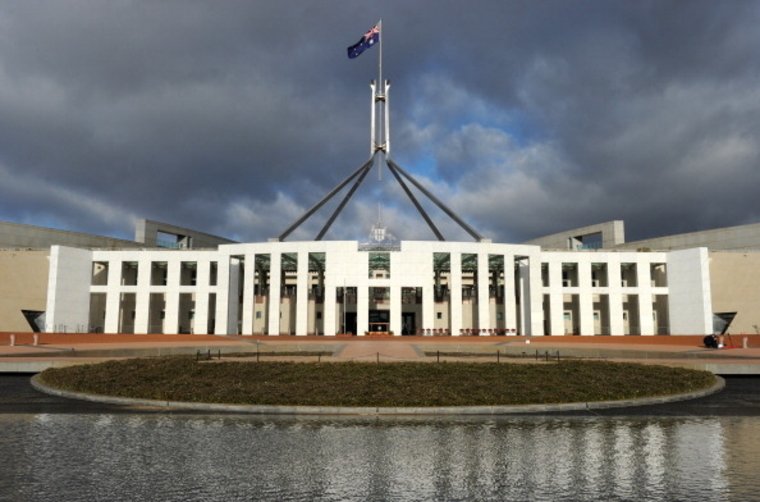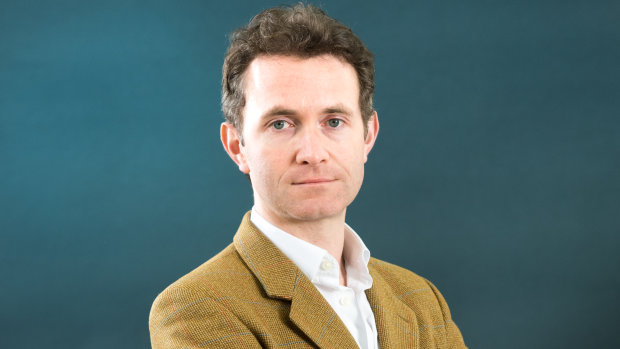As the editor of many books, I spend a lot of time pondering the nature of "facts".
 A fact is something that has become known as true. A fact may be dependent on accumulated knowledge. Facts are considered superior to an opinion or an interpretation. But sometimes the facts change.
A fact is something that has become known as true. A fact may be dependent on accumulated knowledge. Facts are considered superior to an opinion or an interpretation. But sometimes the facts change.
There is the famous quote variously attributed to John Maynard Keynes, and sometimes Winston Churchill: "When the facts change, I change my mind. What do you do?"
Right up until the city of Brisbane in my home state of Queensland was flooded back in January 2011 — flooded following the emergency release of water from the overflowing Wivenhoe Dam — the considered opinion from Australian experts was that the dams would never fill again. This was accepted by many as a "fact".
After that exceptionally wet summer, the Australian Bureau of Meteorology continued to forecast below-average rainfall even for Australia's Murray Darling Basin through the exceptionally wet spring of 2016. Now there is drought again across much of eastern and southern Australia, and what farmers really need to know is: "When will it rain again?"
Of course, droughts in Australia always break, and with flooding rains. But there is no indication from the Bureau when we can expect this break.
Many claim such flood events are unpredictable. In which case, we arguably don't have a scientific theory of climate. A scientific theory is something substantiated: a body of facts that has been repeatedly confirmed through observation and experimentation and that can be confirmed through accurate prediction.
There is no doubt that the Western World is currently being significantly affected by climate change activism. But, the more rational amongst us — who are not necessarily those with a more formal education — can perhaps already see that very little of what is currently being articulated by this populist movement resembles fact.
Currently what we see from activists is more prophecy than numerically verifiable prediction — certainly no testing of falsifiable theory through what might be considered the scientific method.
Indeed, the leaders of the current populist movement against climate change seem unaware of the history of science or the history of climate change embedded in the geological record. And while obsessed with climate, they seem unable to make a practical forecast for next week or next year when it comes to issues such as when the drought here in Australia might break.
This is a long introduction to my next book, which will be available for sale early next year.
It will be a book obsessed with facts that the climate is always changing.
As editor, I get to choose chapter authors. The four most important chapters will be on "water" and it is my intention that they will move us towards a new theory of climate.
The four chapters are variously about cosmic rays, cloud cover, tropical convection and water vapour. Indeed, water — in its many forms rather than carbon dioxide — will be dominant in the new emerging theory of climate.
This theory perhaps has its origins in a little-noted paper written by Richard Lindzen, Ming-Dah Chou and Arthur Hou back in 2001. It got physicists like Peter Ridd thinking.
Dr Ridd is contributing one of the four seminal water chapters in the next book. He will explain how deep convection, which can be thought of as a huge heat engine — is an alternative pathway for the upward transfer of energy from greenhouse gases. The other important chapters in this section on water are by Henrik Svensmark, Geoffrey Duffy and the great Richard Lindzen.
I am seeking your support for the book's publication.
If you can spare more than $A400, you have the option of your name being printed in the book. I am proud that will be my own name will on the front cover of the book alongside Duffy, Svensmark, Ridd, Lindzen and other fine scientists.
The last book in the series sold more than 30,000 copies. It has made a difference, in a small way.
My hypothesis is that this next book will sell three times as many copies, and eventually be recognised as articulating the beginning of a new theory of climate, with Peter Ridd's contribution significantly building on the earlier work of Richard Lindzen.
But these four water chapters will be controversial, with technically complex elements, but
the book will also include chapters that are easier to digest, and a few that are more philosophical.
One of the most popular chapters in the last book (my 2017 edition) — and the least technical, and most literary chapter — was by legendary poet and writer, Clive James, which was an amusing poke at "climate change" and catastrophism as popular culture.
Scott Hargreaves has already written something literary for the next edition (CCTF2020) and he has drawn on Clive's James' translation of Dante's Inferno to help describe the nine circles of "climate skepticism". This will perhaps be the last chapter in this next 2020 edition. What Scott has written is so insightful and also fun.
There will be about 20 chapters in total in the next book, including several chapters on Antarctica. So, of course, there is a chapter on penguins, and perhaps will be two on volcanoes.
Antarctica is twice the size of Australia, and has a complex climate that is central to understanding global atmospheric and oceanic circulation patterns — including drought and flood cycles in Australia.
The history of science suggests that paradigms are never disproven until they are replaced. So, now more than ever, it is important that you back this book that will challenge the current consensus, which is the current dominant paradigm.
Physicist and philosopher, the late Thomas Kuhn, explained that competition within segments of the scientific community is the only process that historically has ever actually resulted in the replacement and then eventual rejection of one previously accepted paradigm or theory. It is so important that alternative voices are heard, that there is opportunity for a new theory of climate to emerge.
If you are at all sceptical of the catastrophist's claims that the current drought in Australia is the very worst on record, sea levels at record highs, and the planet about to melt — and most importantly, if you would like to contribute in a practical way to a fact-based new theory of climate change — then make a financial contribution to my next book in the series.
After all, everyone is entitled to their own opinion, but not their own facts.
 So it was this week, when the NSW Greens took aim at the humble Lord's Prayer, with a motion to scrap it in the state upper house.
So it was this week, when the NSW Greens took aim at the humble Lord's Prayer, with a motion to scrap it in the state upper house. No tradition is safe from this patronising mindset.
No tradition is safe from this patronising mindset. Aside from its practical civic value, religion forms part of Australia's cultural heritage.
Aside from its practical civic value, religion forms part of Australia's cultural heritage. Media companies, the ABC, SBS, and the journalists' trade union have formed the Right to Know Coalition to lobby for a number of legal and regulatory changes to protect "public-interest journalism". Some of those changes are worthwhile and long overdue. For example, the coalition is right to argue for reform to defamation law — and in fact the right to sue for defamation in all but the most egregious cases should be abolished anyway. Similarly, the coalition is correct to say that governments are far too quick to classify information as "secret" and that freedom of information laws are now largely ineffective.
Media companies, the ABC, SBS, and the journalists' trade union have formed the Right to Know Coalition to lobby for a number of legal and regulatory changes to protect "public-interest journalism". Some of those changes are worthwhile and long overdue. For example, the coalition is right to argue for reform to defamation law — and in fact the right to sue for defamation in all but the most egregious cases should be abolished anyway. Similarly, the coalition is correct to say that governments are far too quick to classify information as "secret" and that freedom of information laws are now largely ineffective. The struggle for the people of Hong Kong to retain their freedoms has exposed this compliance. Naturally the people of Hong Kong have been much more aware of the precarious state of their freedoms. After decades of repressing, starving, and murdering its own people, the People's Republic of China was inexplicably gifted the crown colony of Hong Kong in 1997 on the mere hope that mainland governance would improve. The given basis for this transfer was the expiry of a "lease" signed in 1898 between the British Empire and the Qing dynasty, a document to which the Chinese communist party was not a signatory and whose claim should not have been recognised. It is a sad note in modern history that in the same decade the West prevailed over the communist bear, it immediately made territorial concessions to the communist dragon.
The struggle for the people of Hong Kong to retain their freedoms has exposed this compliance. Naturally the people of Hong Kong have been much more aware of the precarious state of their freedoms. After decades of repressing, starving, and murdering its own people, the People's Republic of China was inexplicably gifted the crown colony of Hong Kong in 1997 on the mere hope that mainland governance would improve. The given basis for this transfer was the expiry of a "lease" signed in 1898 between the British Empire and the Qing dynasty, a document to which the Chinese communist party was not a signatory and whose claim should not have been recognised. It is a sad note in modern history that in the same decade the West prevailed over the communist bear, it immediately made territorial concessions to the communist dragon. This month the RBA continued its 84-month unprecedented experiment with low interest rates, setting a record low 0.75 per cent. Since October 2012, every interest rate decision has held or set another record low.
This month the RBA continued its 84-month unprecedented experiment with low interest rates, setting a record low 0.75 per cent. Since October 2012, every interest rate decision has held or set another record low. The Coalition government has failed to refute the notion that freedom of speech is a positive right granted by government as the right to discriminate.
The Coalition government has failed to refute the notion that freedom of speech is a positive right granted by government as the right to discriminate. The idea has returned to public debate this week after the Grattan Institute released a report recommending its implementation in Australia's capital cities.
The idea has returned to public debate this week after the Grattan Institute released a report recommending its implementation in Australia's capital cities. We should also doubt the supposed social benefits of this tax.
We should also doubt the supposed social benefits of this tax. Bush is a former Republican president who opposed gay marriage. DeGeneres is a high-profile talk-show host whose political stance would in Australian terms be called centre-left, but in America is described as liberal or progressive. Social media and many parts of the mainstream media in the US erupted as DeGeneres was attacked for, among other things, creating "a bad look", betraying the gay and progressive community, and being "irresponsible and dangerous" for being seen with Bush.
Bush is a former Republican president who opposed gay marriage. DeGeneres is a high-profile talk-show host whose political stance would in Australian terms be called centre-left, but in America is described as liberal or progressive. Social media and many parts of the mainstream media in the US erupted as DeGeneres was attacked for, among other things, creating "a bad look", betraying the gay and progressive community, and being "irresponsible and dangerous" for being seen with Bush. A fact is something that has become known as true. A fact may be dependent on accumulated knowledge. Facts are considered superior to an opinion or an interpretation. But sometimes the facts change.
A fact is something that has become known as true. A fact may be dependent on accumulated knowledge. Facts are considered superior to an opinion or an interpretation. But sometimes the facts change. The contrast between the youth of Hong Kong, demanding political and economic freedoms, and the brutal repression of the Chinese dictatorship could hardly be clearer.
The contrast between the youth of Hong Kong, demanding political and economic freedoms, and the brutal repression of the Chinese dictatorship could hardly be clearer. An American, Chagnon graduated in Anthropology from University of Michigan and went and lived amongst the Yanomamö Indians who live the region which stretches across Brazil and Venezuela, and he produced books of field research on them. He famously labelled them "the fierce people".
An American, Chagnon graduated in Anthropology from University of Michigan and went and lived amongst the Yanomamö Indians who live the region which stretches across Brazil and Venezuela, and he produced books of field research on them. He famously labelled them "the fierce people". Resurgent Racism is the seventh "flagship" theme of FutureFix, a program devised by academics at the university to show taxpaying Australians their money is being put to good use. Resurgent Racism will "address the emergence of new forms of racism manifesting as national populism and far-right extremism". Researchers will "seek to explain the logics of emboldened white racism in Western liberal democracies", which they predict "will be applicable to majoritarian racism elsewhere". These self-appointed sages have looked into the crystal ball and have seen a future blighted by white supremacists.
Resurgent Racism is the seventh "flagship" theme of FutureFix, a program devised by academics at the university to show taxpaying Australians their money is being put to good use. Resurgent Racism will "address the emergence of new forms of racism manifesting as national populism and far-right extremism". Researchers will "seek to explain the logics of emboldened white racism in Western liberal democracies", which they predict "will be applicable to majoritarian racism elsewhere". These self-appointed sages have looked into the crystal ball and have seen a future blighted by white supremacists.